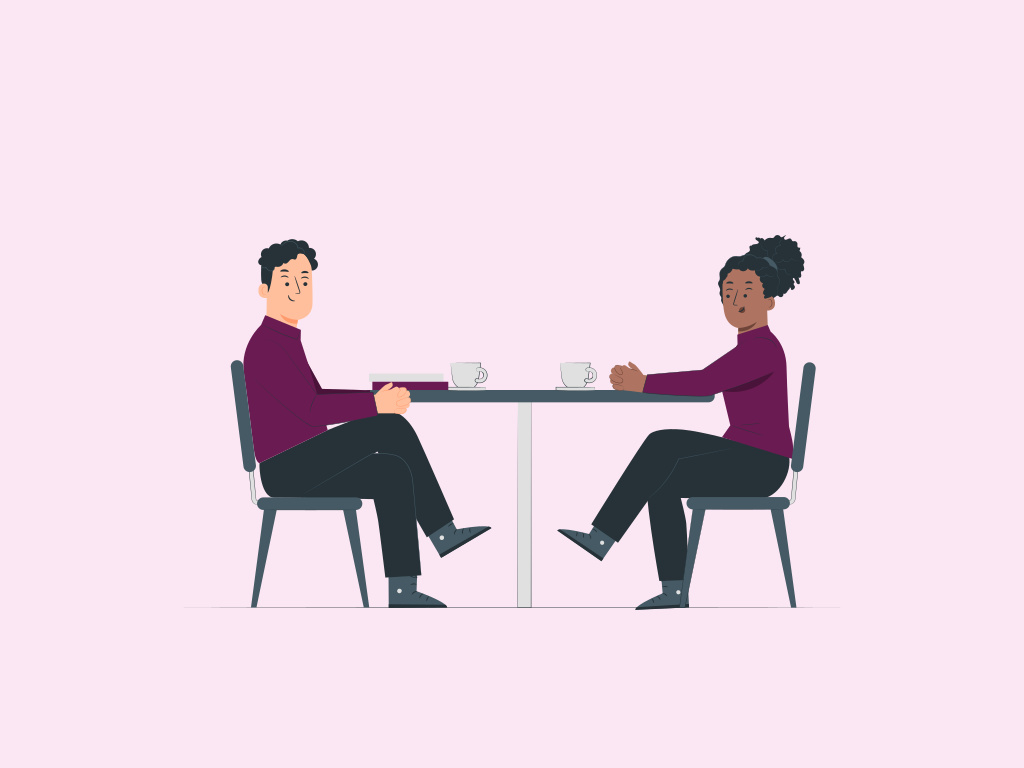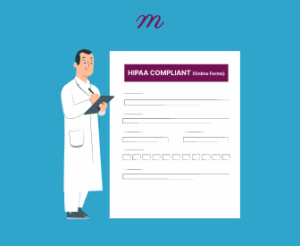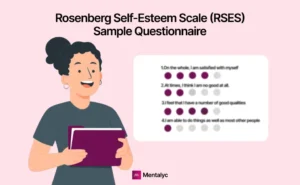The Yale-Brown Obsessive Compulsive Scale (Y-BOCS) helps clinicians measure the severity of an individual’s OCD symptoms. This tool has become the standard way to evaluate OCD in both therapy offices and research studies. When first meeting with someone who has OCD symptoms, the Y-BOCS gives clear numbers that show how serious the condition is and helps track whether treatment is working.
There was this client with serious contamination OCD. Her hands were raw from constant washing. During our initial assessment, her Y-BOCS score was 28, putting her in the severe range. After months of exposure therapy, we reassessed, and her score had dropped to 19. When I showed her the comparison, she nodded and said, “Yeah, that seems about right. I still have bad days, but I’m not spending most of my time washing anymore.” This kind of specific feedback helps clients see their progress, even when symptoms haven’t completely disappeared.
The Y-BOCS does more than just provide numbers. It gives clients a clear picture of their progress. This article will explain the Y-BOCS in simple terms and offer practical advice for using it effectively.
What is the Yale-Brown Obsessive Compulsive Scale (Y-BOCS)?
The Y-BOCS was created back in the late 80s by Wayne Goodman and his team at Yale. Before that, there were no better ways to measure the severity of OCD symptoms.
Think about it – how do you compare someone who washes their hands 100 times a day with someone who has to check their stove before leaving the house? The old assessment tools mixed up the type and amount of symptoms with how bad they were. This made it hard to tell if treatment was working.
The Y-BOCS fixed this problem. Instead of focusing on what specific fears or rituals someone has, it measures how much these symptoms mess up their daily life. Since it came out in 1989, the Y-BOCS has become the go-to measurement for OCD. Pretty much every study on OCD treatment uses it now.
Purpose and Clinical Use of the Yale-Brown Obsessive Compulsive Scale (Y-BOCS)
First, it shows how severe someone’s OCD is. If a client scores high (24-31), they probably need medication and intensive therapy. Those with middle scores (16-23) might start with weekly therapy to see if that’s enough.
The scale also tracks progress over time. Using the Y-BOCS every 4-6 sessions gives clients clear proof they are getting better as their scores go down. This is especially helpful during exposure therapy, which can feel uncomfortable while doing it.
Take one client’s story as an example. His score stayed stuck at 14 for about three months. Seeing this flat line on paper led to a talk with his psychiatrist about changing his medication, which worked well. Without these numbers, we might have kept using treatments that weren’t helping.
For researchers, the Y-BOCS makes it easier to compare different studies since everyone uses the same scale.
Maybe the best thing about the Y-BOCS is how it helps clients feel less alone. Many people think they are the only ones having weird, intrusive thoughts. When they see their symptoms listed on a standard form, they realize others have these thoughts too.
Structure of the Yale-Brown Obsessive Compulsive Scale (Y-BOCS)
The Y-BOCS is basically an interview. This means that it is the clinician who administers it. The professional asks questions and rates the answers. There are 10 main questions – five about obsessions (the unwanted thoughts) and five about compulsions (the behaviors).
They measure, for obsessions:
- Time occupied by obsessive thoughts.
- Interference due to obsessive thoughts.
- Distress associated with obsessive thoughts.
- Resistance against obsessions.
- Degree of control over obsessive thoughts.
And for compulsions:
- Time spent performing compulsive behaviors.
- Interference due to compulsive behaviors.
- Distress associated with compulsive behaviors.
- Resistance against compulsions.
- Degree of control over compulsive behaviors.
Each question gets a score from 0 to 4, where 0 means “no problem” and 4 means “extreme problem.” Showing clients the rating scale helps them point which option fits best for their experience.
This setup makes sense because OCD has these two parts – the thoughts and the behaviors. Some clients struggle more with one side than the other. For example, one client scored higher on obsessions than compulsions. Turns out he was doing most of his rituals in his head, so they weren’t as obvious.
The interview format allows for follow-up questions, which proves valuable since people with OCD often minimize their symptoms. A client described that she “only checked things a little bit.” After some gentle questioning, it came out that “a little bit” meant 3-4 hours every single day! A self-administered test might have missed this crucial information.
Y-BOCS Scoring and Interpretation Guide for OCD Severity and Progress Tracking
Adding up the scores is easy – just total all 10 items for a score between 0 and 40. The hard part is figuring out what that number actually means for treatment.
Here’s the rough breakdown:
- 0-7: Subclinical (not really OCD)
- 8-15: Mild OCD
- 16-23: Moderate OCD
- 24-31: Severe OCD
- 32-40: Extreme OCD
There are also two subscale scores – one for obsessions (items 1-5) and one for compulsions (items 6-10). Each can be up to 20 points.
These subscales can tell you a lot. A college student who scored 22 overall—moderate OCD—had an obsession score of 16 but a compulsion score of only 6. This revealed his OCD manifested primarily as mental processes. Treatment focused first on thought-based interventions, which proved highly beneficial.
How much should scores drop to show real improvement? Most experts say a 25-35% lower score means treatment is working. In real life, clients usually need to see their numbers go down by 6-8 points before they actually feel better. Telling clients this up front helps them not get discouraged by small ups and downs in their scores.
Treatment response usually means the score drops by 35% or more. When a client’s score drops to very low scores, the focus shifts from active treatment to preventing relapse.
An interesting observation is that items measuring resistance and control (4, 5, 9, and 10) often improve more slowly than others, particularly for individuals with longstanding OCD. Makes sense – learning to resist urges is one of the hardest parts.
Minor changes in score (3-5 points) should not receive overemphasis, as they may represent measurement error rather than genuine clinical change. The overall trajectory over time provides more meaningful information.
Y-BOCS Checklist
The authors also developed a checklist to ensure that symptoms are not overlooked. The Y-BOCS Symptom Checklist is honestly my favorite part. While the 10-item severity scale measures how bad the OCD is, the checklist tells you what specific symptoms the person has.
It lists over 50 common obsessions and compulsions in 15 different categories according to their behavioral expression or theme. These are:
- Aggressive obsessions (like fear of hurting someone)
- Contamination fears
- Sexual obsessions
- Hoarding obsessions
- Religious obsessions (Scrupulosity)
- Symmetry obsessions
- Miscellaneous obsessions
- Somatic obsessions
- Cleaning/washing compulsions
- Checking compulsions
- Repeating rituals
- Counting compulsions
- Ordering/arranging compulsions
- Hoarding/collecting compulsions
- Miscellaneous compulsions
Administering the checklist prior to the severity scale offers several advantages. Patients often do not recognize certain behaviors as symptoms of OCD, and the checklist increases awareness. It provides clinicians with a comprehensive understanding of the symptom profile and prepares clients to accurately assess symptom severity.
Sometimes the checklist leads to big revelations. A client seeking treatment for door lock checking became visibly distressed when reviewing the aggressive obsessions section. Finally, she revealed a previously undisclosed fear of accidentally hitting someone while driving, something she had never shared out of embarrassment. Without a systematic assessment, this important component of her OCD might have gone untreated.
The checklist also helps track how symptoms change over time. OCD is sneaky – the specific fears often shift while the underlying pattern stays the same. By checking in with the symptom list every few months, these shifts can be spotted and the treatment adjusted.
Y-BOCS-I vs. Y-BOCS-II: Updated Versions of the Yale-Brown Obsessive Compulsive Scale
In 2010, Goodman and his team created a new version, the Y-BOCS-II. Both have good points.
The Y-BOCS-II is more sensitive to changes in symptom severity, and it includes a more dimensional approach to symptom assessment. It is basically the same structure but with some improvements:
- The Y-BOCS-II replaced the problematic “resistance to obsessions” item with an “obsession-free interval” item since modern OCD treatment often encourages acceptance rather than resistance of thoughts.
- The rating scale expanded from 0-4 to 0-5, increasing the total possible score from 40 to 50 and improving sensitivity for detecting changes in severe cases.
- The Y-BOCS-II explicitly includes avoidance behaviors in the scoring, recognizing that many OCD clients avoid triggers rather than performing visible compulsions.
- The symptom checklist was updated with more comprehensive items, clearer examples, and better coverage of newer OCD presentations like “just right” experiences.
- Item wording and anchor points were revised throughout for better clarity and clinical usefulness, with instructions that better align with current CBT approaches to OCD.
Despite these improvements, most people still use the original Y-BOCS. Partly this is just habit. Also, the original has tons of research behind it.
The Y-BOCS-II offers advantages for new clients, especially because of the inclusion of avoidance questions. However, the original version is sometimes still appropriate, especially for clients who started treatment elsewhere.
It is important to know that the scores do not match exactly between versions. If you are trying to decide which to use, think about your setting. If everyone else where you work uses the original, stick with that for consistency. If you are starting fresh, the newer version has some real advantages.
Limitations and Ethical Considerations When Using the Y-BOCS in OCD Therapy
No assessment tool is perfect, and the Yale-Brown Obsessive Compulsive Scale (Y-BOCS) definitely has its issues.
For starters, it was designed for adults. Although there is a version for children (CY-BOCS), the adult version may not adequately capture adolescent presentations. Adolescents often have difficulty disclosing certain difficult obsessions.
The Yale-Brown Obsessive Compulsive Scale does not capture mental rituals very well. The compulsion questions were originally designed for behaviors you can see. There was this client with extensive mental rituals (like mentally reviewing conversations) whose score seemed way too low compared to how much she was suffering.
Cultural stuff matters too. The scale was created in America and sometimes misses culturally specific OCD symptoms. When working with clients from different backgrounds, professionals must consider how culture and religion affect their symptoms and how they talk about them.
Using the Y-BOCS effectively does benefit from some formal training. It’s one of those tools that reveals more nuance once you have had some practice with it. Despite time constraints in busy clinical settings that might encourage an abbreviated assessment, comprehensive administration often yields a more accurate understanding of clients’ experiences.
There are ethical issues too. The scale asks about really sensitive stuff – sexual thoughts, violent thoughts, religious fears. Creating a safe space before diving into these areas is very important. Clients benefit from understanding that having these thoughts does not reflect their character; OCD thoughts often contradict the individual’s core values, which explains their distressing nature. Another ethical issue is how scores influence treatment decisions and insurance coverage. Although quantitative measures provide valuable guidance, they should complement rather than replace clinical judgment.
Finally, there’s the risk of focusing too much on the numbers. Therapy is about human connection, not just scores. Finding a balance is key, using the Y-BOCS as a guide without letting it take over.
Despite all these issues, the Y-BOCS is still one of the best tools for assessing OCD. When used thoughtfully, it helps both therapists and clients understand the disorder better and track progress. Like any tool in therapy, it works best when combined with clinical judgment and genuine human connection.
Years of clinical application demonstrate that the Y-BOCS contributes significantly to therapeutic effectiveness. Not because of perfection, but because it establishes a shared framework for discussing OCD and recovery.
Why other mental health professionals love Mentalyc

“It improves the quality of my work as I review my sessions … I bring a sense of continuity from session to session because of the really good summary and progress notes that Mentalyc gives me.”
Licensed Marriage and Family Therapist

“I go back and can read the notes, and it really helps me for the next session … it has made me a much better counselor.”
Licensed Professional Counselor

“It helps align the note and the plan for moving forward with sessions … it’s been a really good aid in giving me direction.”
LPC

“I benefit tremendously every time I wrap up a session and then a few minutes later, I have this AI note … it makes me a better clinician in a variety of ways.”






